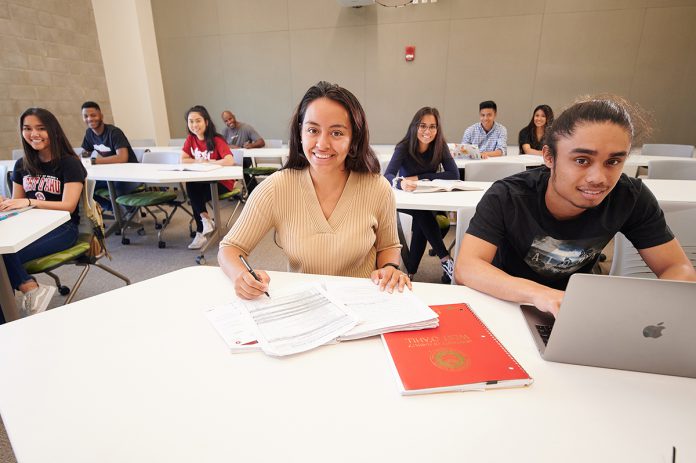In a survey the University of Hawaiʻi–West Oʻahu administered this past spring semester, a majority of seniors reported positive experiences in areas related to knowledge acquisition and personal development, and a majority of students surveyed rated their educational experience at UH West Oʻahu as “excellent” or “good,” indicating they would attend again.
These are among the positive takeaways of the recently released results of the National Survey of Student Engagement (NSSE) 2020. UH West Oʻahu last semester distributed the survey to all freshmen and seniors, with a total of 88 and 328 responses, respectively, for those groups. (This yielded an overall response rate of 26%, which is just below the national average of 28% for similarly sized institutions.)
“Since its inception 20 years ago, the NSSE has become one of the most widely used student surveys in higher education,” said UH West Oʻahu Institutional Research Office Director John Stanley. “Hundreds of four-year colleges and universities administer NSSE every year in order to collect information about students’ participation in programs and activities that institutions provide for their learning and personal development.”
The results provide an estimate of how undergraduates spend their time and what they gain from attending college, Stanley said.
“The NSSE is an important survey for UH West Oʻahu because it enables us to assess the extent to which we are providing our students with the educational experiences necessary to achieve our university learning outcomes by the time they graduate,” he said. “It also provides us with essential information for our reaccreditation by the WASC Senior College and University Commission.”
UH West Oʻahu’s NSSE 2020 Snapshot, which provides a concise and easy-to-digest four-page summary of key results, can be found here.
Stanley said among the collection of results derived from the NSSE, his attention was drawn to the following key findings:
- Due to their positive associations with student learning and retention, special undergraduate opportunities are designated “high-impact,” such as service learning, internships, and research with faculty. Results from the NSSE indicate that 66% of freshmen at West Oʻahu participated in at least one high-impact practice, compared to 48% of students at our peer schools. One of the most popular high-impact experiences at UH West Oʻahu is service learning (e.g., community service). Results from the NSSE show that our campus is engaged in significantly more service learning opportunities compared to our peer institutions (+19%). This was the measure that our campus performed highest on relative to our peer group.
- Both first-year students and seniors reported a significantly higher number of hours spent reading for their courses, and significantly higher number of pages of assigned writing, compared to students in UH West Oʻahu’s comparison group.
- When asked “To what extent did students’ courses challenge them to do their best work,” 51% of freshmen and 68% of seniors at UH West Oʻahu indicated “high challenge,” compared to 47% and 56% for respective freshmen and seniors at our peer schools.
- Both first-year students and seniors rated their overall educational experience as being very high relative to our peers. 92% of seniors rated their experience as “excellent” or “good,” and 93% said they would attend UH West Oʻahu again (compared to a peer average of 80%).
“My overall interpretation of the NSSE results is very positive,” Stanley said.
A strong majority of UH West Oahu seniors reported positive experiences in ten key areas identified by NSSE related to knowledge acquisition, skills, and personal development, he said. And over 90% of students surveyed rated their educational experience at UH West Oʻahu as “excellent” or “good,” and indicated that they would attend again.
“Of course, there are always areas where we can improve as a campus,” Stanley said. “Survey scores for student-faculty interactions, for example, were marginal, and this is an area of the survey that we are delving deeper to better understand.”
“The results shared here are only a snapshot from a vast survey of our students’ experiences,” Stanley added.
UH West Oʻahu is just getting started in its analysis of the data.
“We administered additional survey modules on ‘Inclusiveness and Engagement with Diversity’ and ‘Learning with Technology,’ two strategic areas in our institutional mission that we are beginning to examine more closely,” Stanley said. “In an effort to offer a comprehensive synthesis of the results, we are working on a research brief that will include an executive summary and deeper dive into the data analysis.”
